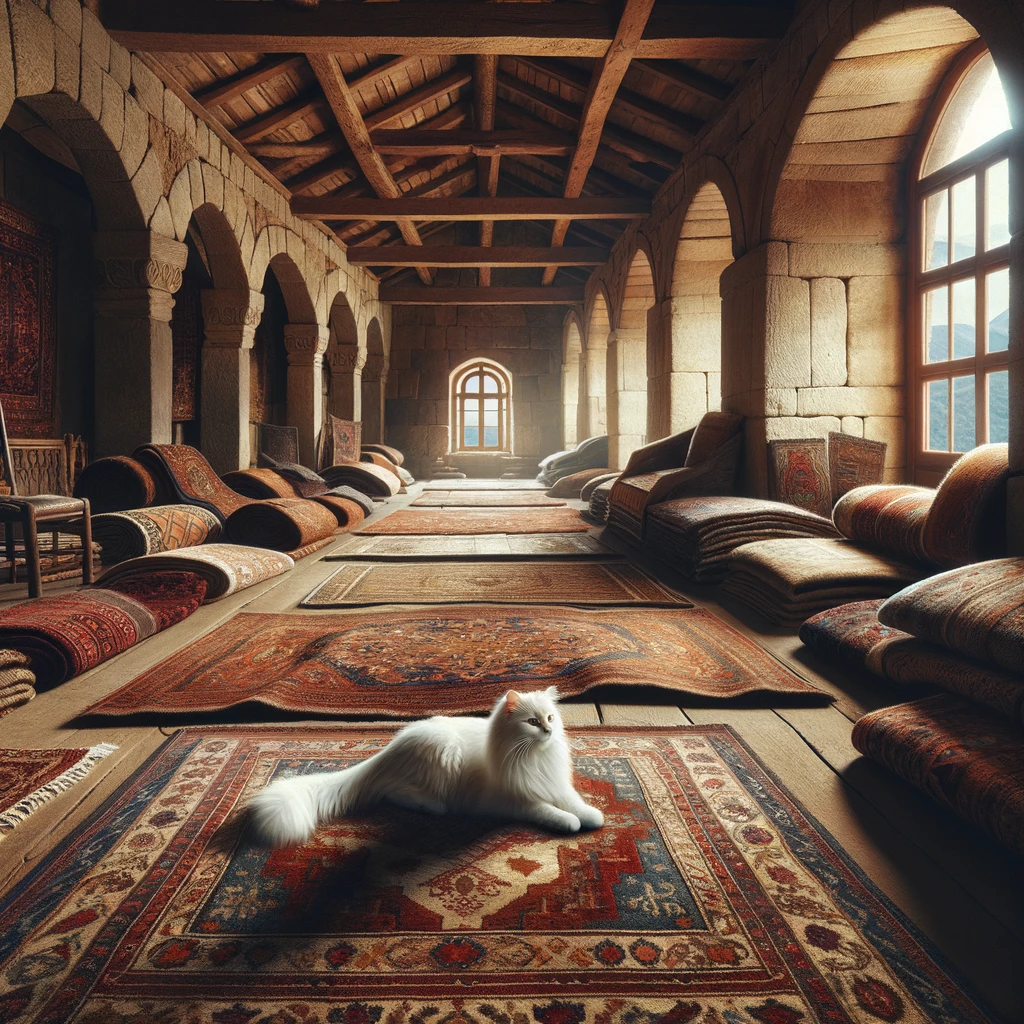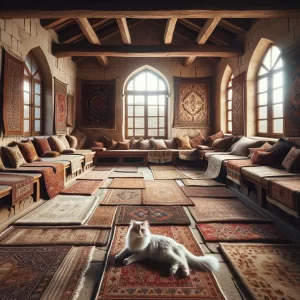Exploring the Timeless Charm of Vintage Rugs
When we think about antiques, we often picture items that have endured the test of time, such as those aged over a hundred years. However, the true significance of a rug goes beyond its age. Various elements play a role in determining the value of a rug, including its origin, materials and dyes used, condition, craftsmanship, weaving techniques, size, and, most importantly, its rarity. The distinctiveness of a rug. From its designs to the methods employed. Significantly impacts its value and scarcity. Delving into the history behind these pieces provides an understanding of their significance.
Revealing the Fascinating Tales of Vintage Rugs
Vintage rugs and kilims hailing from regions renowned for cattle breeding have garnered acclaim from those originating from Turkey, the Caucasus, the Middle East, and Iran. These rugs are characterized by their diverse weaving techniques, patterns, and colors that mirror their era and place of production. The charm of rugs with their pastel shades, the richness of Persian rugs with their deep dark weaves, and the variety in Caucasian patterns are highly cherished examples.
Every rug narrates a tale of its roots through its motifs and colors that reflect the unique heritage of the region it comes from. These rugs, seen as artifacts, embody the spirit and traditions of their originating cultures.
Exploring the Origins of Vintage Rug Varieties
The origin of vintage rugs and kilims is often linked to the areas where they were crafted, though pinpointing their origins can pose a challenge. The materials used in their creation, such as the patterns and color schemes employed, play a crucial role in identifying their geographical roots. For example, Iranian rugs are renowned for their wool, cotton, and silk blend, showcasing designs with curved details. Turkish rugs stand out for their Gördes knots, while Persian rugs employ the Senneh knot technique that influences the sharpness and precision of their patterns. Rugs from regions like the Caucasus and the Middle East feature hues. European rugs showcase floral motifs, and Medina rugs are known for their asymmetrical designs.
The Early Era of Rug Crafting
The art of rug making is thought to have originated in North and Central Asian steppes as a way for communities to shield themselves against weather by insulating their tents. The earliest rugs were woven using wool from sheep and goats, serving both purposes, such as warmth and aesthetics, with decorative patterns.
The ancient Pazyryk Carpet, discovered in the Altai Mountains and dating back to the century BCE, exemplifies the enduring art of rug crafting. It’s vibrant hues and balanced designs beautifully demonstrate the craftsmanship and cultural importance attached to rug creation.
Antique Rugs in Art History
In art history, rugs hold significance not just as individual artworks but also for their role in illuminating the ethnic and social contexts of their eras. Renaissance artworks feature Persian rugs showcasing the cross-cultural exchanges and influences present in artistic expressions. Depictions of rugs in paintings and illustrations tell stories. Provide insights that underscore their significance beyond adornments.
Antique. Cultural Interactions
Exploring artifacts like rugs and kilims unveils insights into different cultures. The distinct patterns and customs found in neighboring communities offer glimpses into standing cultural traditions. Rugs serve as a medium for tracing exchanges across regions with shared motifs indicating awareness or direct influences among diverse groups.
Preservation and Conservation of Antique Rugs
Craftspeople’s careful restoration of rugs is crucial for safeguarding their cultural and historical worth.
This thorough process involves examining the materials, weaving methods, and dyes to ensure restoration. Initiatives, like the “patchwork” project, emphasize the importance of safeguarding these treasures by combining valuable pieces to restore and market them, recognizing their significance.
Antique Rug Markets and Collecting
For enthusiasts, antique rug markets are treasure troves filled with one-of-a-kind items offering selections from regions like Iran, Bünyan, Hereke, Isparta, and the Caucasus. Understanding the features of rugs from areas such as the intricate Isfahan rugs or the silk Kom rugs from Iran is essential for any collector. These markets provide insights into the history and exquisite craftsmanship of rugs.
Assessing the Value of Antique Rugs
The classification of a rug as an antique goes beyond its age; it includes factors like natural dye usage, handcrafted techniques employed, and the uniqueness of its design. Newer, high-quality rugs made by artisans can hold significant value. For individuals seeking to incorporate the timeless beauty of rugs into their homes, exploring collections can present pieces that not only elevate their living spaces but also carry on a tradition of artistry and heritage.


